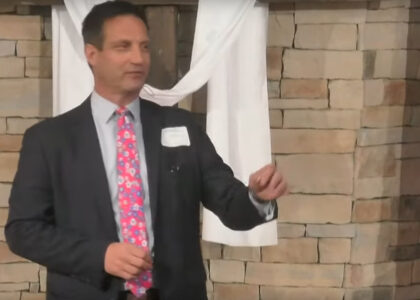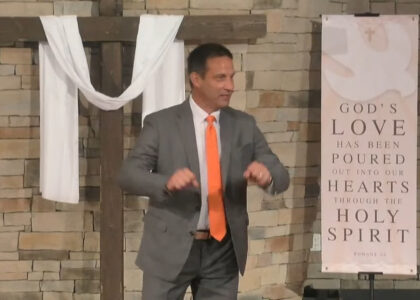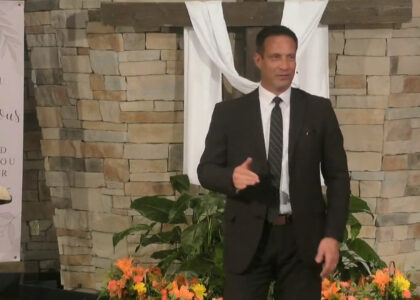Who Am I? Part 2
Text: Phil 3:1-17
Watch on YouTube HERE
Intro: How Was Your Identity Formed? Multiple Answers and Many Stories
- Last week, we studied Moses and discovered that developing self-understanding is a lifelong project.
- This week we will consider more carefully Tradition as one of the standard options for understanding identity formation. I hope to show:
- A fundamental aspect of identity formation.
- An inadequate strategy by itself.
Identity Formed from the Outside-In
- The Traditional Way of Defining the Self
- Strong, stable social institutions name and define you.
- These institutions teach you: who you are, how to behave, and the roles available to you in a stable social world.
- If you go back 500 years or just a few generations in traditional cultures, you would find that social structures played a primary role in people’s lives and left little room to maneuver.
- Rigid social classes & punitive ways of dealing with social deviance.
- Strong, stable social institutions name and define you.
- Key social forming institutions in my life.
- Family (few divorces and more time with family), Schools, Churches, the Business World, & the US before the 60’s.
- Family, the initiating institution of identity.
- Increasingly during last 100 years in American culture, the role of public institutions has been challenged and modified.
- Family (few divorces and more time with family), Schools, Churches, the Business World, & the US before the 60’s.
- Tradition and Change: Even Traditional Institutions Adapt
- The rate of change varies: managed, evolutionary change (gradual) or active, revolutionary change (rapid).
- MLK, Race and social change in America.
- Note: Even with the more modern strategy for identity formation, there is still a dependence on groups and institutions outside of us to validate & support our authentic identity. The institutions are now more fluid and plastic: Universities as sources of key ideas, media & social media, strong advocacy groups, modern socially conscious corporations, and the emergence of a political world that is both more global and tribal, connected and fragmented.
- The rate of change varies: managed, evolutionary change (gradual) or active, revolutionary change (rapid).
If you take this strategy seriously, you may notice things in the NT that you missed before
- Jesus, His Father’s Son & Judaism as a Traditional Religious System
- Jesus and Institutional Insiders: A Threat to Tradition & Stability
- Jesus and Institutional Outsiders: those who live at the boundary.
- Jesus and women. (Jn. 4 and 8; Mary and Martha)
- Jesus and leadership as humble service rather than status & power.
- Was Jesus building an institution or communities of disciples?
- Acts: The Story of Emerging Christianity and Social Tensions.
- Persecution of the Disciples in Jerusalem Acts 1-9.
- Peter goes outside the boundary to reach Gentiles. Acts 10-11
- The struggle to accept the changes without forcing conformity to Jewish social identity norms.
- A Council to Negotiate Expectations. Acts 15
- Paul: A Revolutionary Missionary & the Writer of Letters
- Missionary to the Gentiles: Life between cultures.
- His letters encourage people & address problems that arise in young churches that are in hostile environments.
- Working out a flexible cross-cultural strategy.
- Paul’s solution to the problem described in Philippians 3:1-17 his new identity is now in Christ.
- Jesus taught on New Wine and New Wineskins; Paul formed New Wineskins.
- Spiritual freedom and the claims of the weaker members as important.
- Commitment to the poor & the marginal rejected by a larger society.
- Addressing organizational roles.
- Paul’s Christ-centered reconceptualization of standard social roles. You may have trouble seeing what he is doing because of cultural bias & because of traditional interpretations of Paul.
Madison Church: Our church as a story of tradition and change
- Churches of Christ as a Strong Institutional Tradition
- Congruent Institutions: Church, Family, School, and Society
- Moral Order
- Sexual codes included modesty, mixed swimming, & dancing.
- Authority and Honor
- Problem: Some People were rejected & hurt because they didn’t fit.
- An Innovative Leader Open to Change and Growth
- Ira was a thoughtful change agent: innovative and committed to many changes.
- A different model for church organization and innovation.
- Carefully framed change (he challenged racial discrimination).
- He had harsh critics.
- A Resistant Leader: Responding to Perceived Dangers
- Ira’s strong criticism of changes that he saw as threats.
- Don Finto as problematic for our tradition: he did not fit.
- Holy Spirit & Small Groups as problems of control.
- Later Resistance to Change Accelerated and Tensions Increased:
- Rapid cultural changes, agendas for rapid church change
- Ruble Shelly as problematic.
- Escalating Shifts in Youth Culture the Loss of Young People
- Contemporary Christian Music and Worship
Conclusion: Tradition vs. the Formation of Mature, Christ-centered Character & Community
- A Church must play an important role in pointing us beyond itself to Jesus.
- When church as an institutional identity becomes idolatrous.
- A church-centered definition of being a Christian? The church as a defining institution in your life can become problematic if it becomes more important than knowing and following Jesus.
- Congregational pride cuts us off from other Christians.
- Branding and Competition: Growing a church at the expense of other churches.
- When institutional maintenance becomes more important than reaching the people that Jesus loves and for whom he died.
- The Spirit, Scripture, & New Experiences can open your mind & heart.
- Is protection of a tradition more important than following Jesus?
- Institutional leaders & individuals, be aware of pride.
- Change is not always progress! Staying the same does not always honor Jesus!
- Blindness to personal mistakes and bad turns!
- Seeing God at work in unexpected places, even in places that do not fit my identity.





